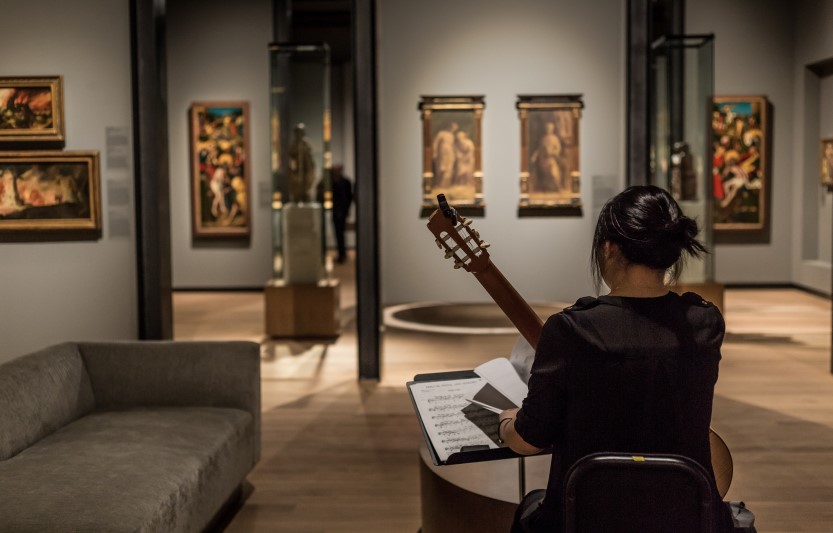
In this guide for beginners learning how to read music, we’re going to give you the straightforward way to be able to play what’s on the score.
Reading music is often thought of as a boring and excruciating activity. However, nothing could be further from the truth. In order to read music, you need to be completely focused on what you’re doing. If your thoughts deviate for even half a second, you’ll probably miss a note, especially on a challenging score. In other words, you have to be on your toes all the time. This makes it incredibly fun and entertaining. So let’s get started with the action! Here is a guide for beginners learning how to read music.
Manage your expectations
It is important that we start with a word of caution: reading music is a skill that needs to be honed. The best orchestra musicians have typically spent decades working on their craft. This includes learning how to read music really well. In other words, don’t expect to work on this for one hour and come out with the hopes of learning music.
Like most worthwhile endeavors, reading music takes practice and constant dedication. Go at your own pace, and have fun.
Learn the name and values of the notes
Warning aside, this is step one. You need to know what the numerical values of each note is so you can play them in the correct duration. For instance, a whole note lasts four beats, while a quarter note lasts 1 beat.
Make sure you go slow. My recommendation is to learn the values of the following: whole note (4 beats), half note (2 beats), quarter note (one beat), 8th note (half a beat). Also, it is crucial that you know what these notes look like.
Roadie 4 is the smartest and fastest automatic tuner we’ve ever made.
Whether you’re a beginner or a seasoned musician, Roadie 4 is designed to make your life easier with precision tuning, effortless restringing, and advanced connectivity.
-
Fast, Accurate & Reliable automatic tuning, even in noisy environments.
-
Compatible with almost all string instruments, including guitars, ukuleles, mandolins, banjos & more…
-
Comes with 150+ alternate tunings and custom tuning setups
-
All-in-one tool to tune, restring, and maintain your instrument
-
Ergonomic design with anti-slip grip and intuitive scroll wheel interface
-
Large full-color display for a seamless user experience
-
Built-in vibrating/beep metronome
-
Wi-Fi and Bluetooth 5.0 enabled for syncing, updates, and expanded features
Start with 4/4 time signature
You should start with 4/4 time signature. What is time signature? It is what indicates how many beats fit on each bar. For instance, 4/4 time signature fits four beats on one bar. What happens after the bar is over? Well, then another bar starts, also with four beats, and so on until the music ends.
Have you ever tapped your foot to a song? Well, you were most likely tapping four beats per measure. This is because the 4/4 time signature is by far the most used on western music. That includes rock, pop, country, jazz, salsa, electronic, etc. Most songs in those styles feature 4/4 time signature.
Learn the basic C major scale on the staff
The staff is composed of five lines. Naturally, between those lines are spaces. Learning which notes go where is imperative to learning music. The good news is that when you read music, you’re either ascending or descending. There’s no other option. The C major scale is ideal to illustrate this principle. It is composed of C, D, E, F, G, A, B, just like we learned in kindergarten.
Each of the lines and spaces on the staff correspond to one note. Learn just a few notes at first to make it more manageable. The notes you should learn largely depend on your instrument. This leads us to the next point…
Get a good music teacher
Getting a good music teacher is probably the best and fastest way to learn how to read music. A good teacher can truly help you make the most of your time. That way you are able to avoid unnecessary frustration and make steady progress.
As I mentioned before, the instrument you play will dictate what to do when you first start learning how to read music. An electric guitar player will have different needs than a piano player, and even a classical guitar player. A good teacher is the best ally you can have to point you in the right direction.
Practice
None of the above will help much if you don’t practice. Once you get started, there will always be something for you to practice. As mentioned, the best way to tackle this is with the help of a teacher, as she will give you appropriate exercises for your level. Moreover, a teacher can help you assess your progress to then mold your practice to what you really need.
Practicing on a daily basis can have an impact that is hard to overstate. If you truly want results, there is no substitute for practicing.
Write a song or piece
If you are up for a challenge, write some music. Although this involves knowing notes, their values, where they go on the staff, etc, it is quite different from reading music. This is the reason why it’s also so effective. Writing music forces you to use what you have learned for reading music, but in a completely different perspective.
You’d be impressed how many beginners can read simple pieces but completely fold when asked to write something on their level. Hence the increased effectiveness of this particular tip. Naturally, this only works once you have a basic grasp of reading music.
Work exclusively on rhythms
One of the most challenging aspects of reading music is getting the rhythms right. This is why there are many music reading drills that involve only rhythms. As you progress, the combination of note values gets more challenging. This is because you will deal with more variables and higher tempos or speeds.
Practicing rhythms exclusively lets you isolate this vital part of reading music. As a matter of fact, this is a common technique used by musicians that have to work on difficult passages of music. They first decipher the rhythm aspect of it. Once they have that, they move on to adding the correct pitches.
This guide for beginners learning how to read music is meant to be a little push for you to get started. The most important thing to remember is that reading music is not only fun and exciting, but also a great exercise for your brain.
Make sure you take it slow, have fun, and put in the time. Feel free to leave us a comment with any thoughts you might have on reading music.


